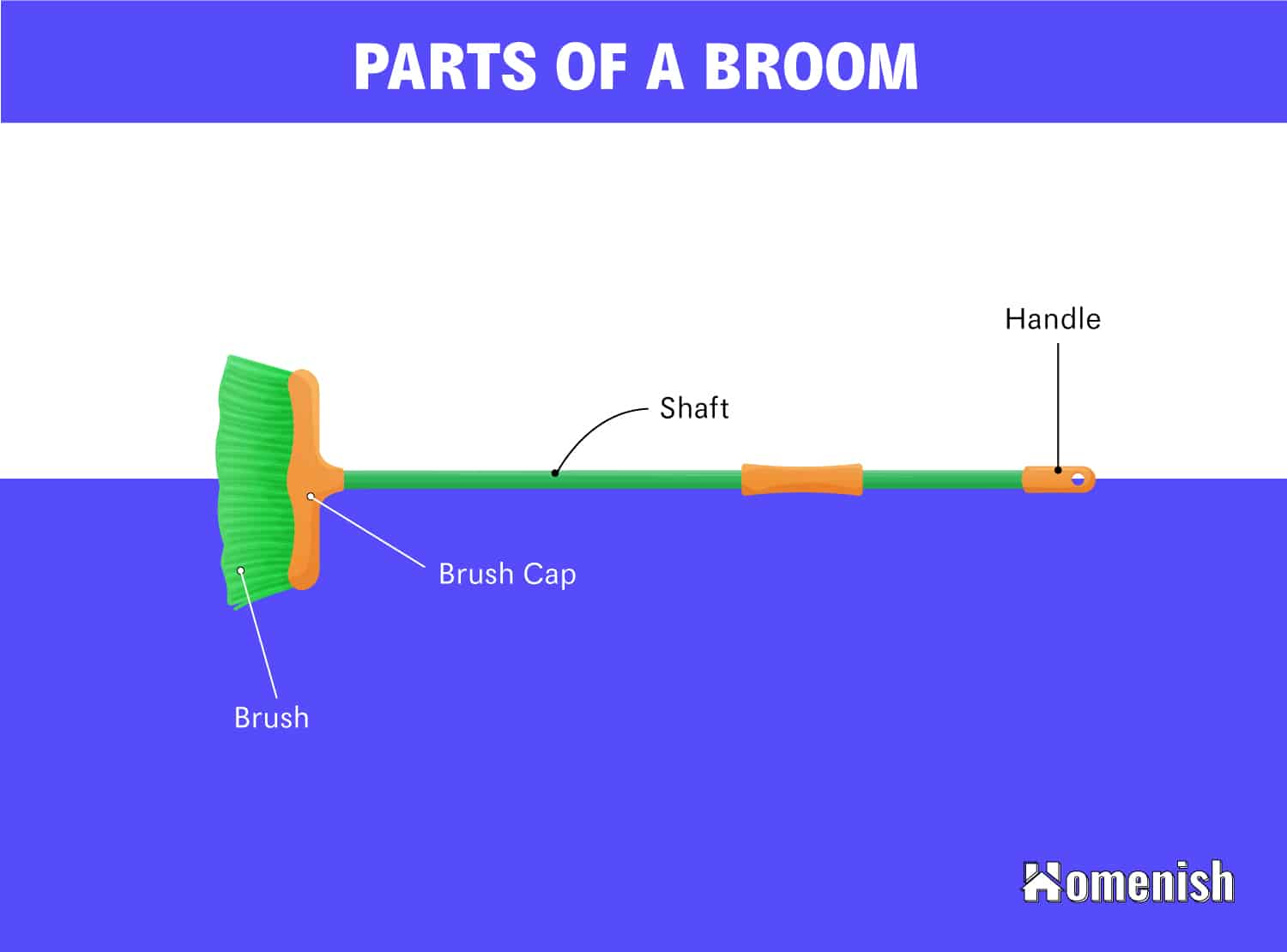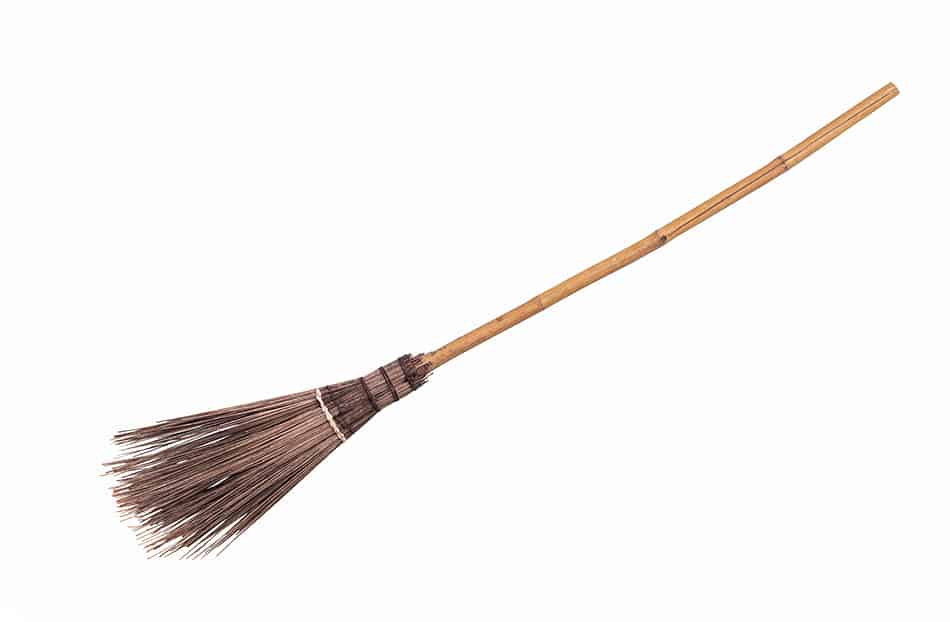A broom is a common tool used indoors and outdoors for sweeping up dust, dirt, and debris. Here we look at the various components that make up a broom.
There is a variety of brooms but in this article, we’ll illustrate and describe a standard broom that you’ll commonly see in any household store.
Please find this broom diagram handy. You can refer to each part of a broom explained in the following sections.

Brush
The brush of a broom is the part that comes into contact with the floor when you are sweeping. It features the bristles that in traditional brooms might be made from corn or horsehair, but in modern brooms, the bristles are more commonly made from a type of plastic.
The design of the brush and the way it is made will play a large part in the effectiveness of the broom. The brush should have the bristles secured tightly so that they do not come off with regular use.
The purpose of the broom will affect the bristles’ strength. For example, a garden broom will need much more robust and sturdy bristles than a kitchen broom.
For situations where your broom will be put through its paces, you should opt for a brush with very thick, tightly packed, firm bristles. For light indoor use, the bristles can be softer so that they don’t damage flooring but are still capable of collecting dust and dirt. A brush with an angle is great for getting into corners where standard-shaped brushes struggle to reach.
Brush Cap
The brush cap is a cover for the uppermost part of the bristles on the brush. It helps to keep the brush connected to the shaft and keeps the bristles secured in place. The brush cap also gives the modern broom a neater appearance than a traditional broom, where the tops of the corn bristles can be seen.
Shaft
The shaft of a broom is the long pole that runs between the brush cap and the handle. Outdoor brooms will typically have wooden shafts, along with traditional brooms. Modern brooms and those intended for indoor use are more likely to have plastic shafts. The shaft can vary in length to suit the height of the user. This is important to help prevent shoulder and back pain or posture issues.
Extendable shafts are ideal because you can customize the length of them to suit your height, thereby ensuring you don’t have to bend over when sweeping. Standard-sized shafts can range in length from three to four feet. A broom shaft needs to be strong so that it does not snap under pressure while being used, but it should also be lightweight so that the user does not experience fatigue.
Handle
The handle of a broom sits at the top of the shaft and is where the user will typically place their hands to hold the broom. On modern indoor brooms, the handle will be made from plastic and have a hole punched through it, providing an easy way to hang up the broom from a hook or a nail when it is being stored. Some brooms might have rubber handles to improve the ergonomics of the tool, while some brooms will have no handles at all.






